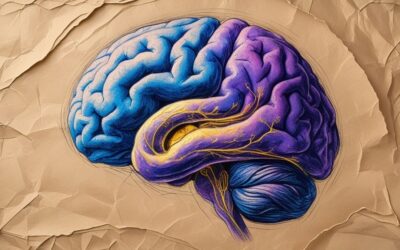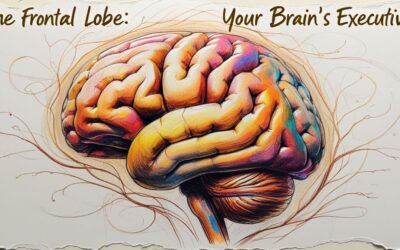Have you ever wondered how a song can instantly transport you back to your childhood? Or how you can understand these very words? This episode journeys into the temporal lobe, the brain’s incredible multimedia center. We’ll explore how this region, tucked behind your ears, processes sound, decodes language, stores your most precious memories, and even helps you recognize faces. Get ready to meet the part of your brain that makes you, you.
What Makes a Song a Time Machine?
How is it possible that a few notes from a forgotten song can instantly pull you back twenty years, making you feel the sun of a specific summer afternoon or the sting of a teenage heartbreak with crystal clarity? Where does that magic live? It’s not magic, really. It’s neuroscience. And the wizard responsible is a humble-looking region of your brain, tucked right behind your ears, called the temporal lobe. It’s the brain’s archivist, its translator, and its sound engineer, all rolled into one. It’s the part of you that takes the raw data of the world and weaves it into the meaningful, emotional story of your life.
The Grand Central Station of Sound
First and foremost, your temporal lobe is where hearing happens. Sound waves enter your ear, get converted into electrical signals, and are sent straight to this region, specifically to a strip of tissue called the primary auditory cortex. But it doesn’t just “hear” the sounds; it interprets them. It’s the difference between hearing a random noise and recognizing it as a car horn, a bird’s song, or your best friend’s laugh. It’s the brilliant sound engineer in your head that can pick out a single instrument in a symphony or focus on one voice in a crowded, noisy room. Without your temporal lobe, the world would be a meaningless wall of sound. With it, it becomes a world of music, conversation, and meaning.
The Living Library of Language
Now, understanding a voice is one thing, but understanding the words that voice is speaking? That’s a whole other level of genius, and it happens in a specific spot in your left temporal lobe called Wernicke’s area. Think of it as your brain’s personal, living dictionary and grammar checker. As you listen to me now, it’s Wernicke’s area that’s decoding the sounds, matching them to words you know, and stringing them together into coherent ideas. When this area is damaged, a person can still speak fluently, but the words come out as a jumbled “word salad.” They can hear you perfectly, but the meaning is lost, as if their internal dictionary has been completely scrambled. It’s a profound reminder that language isn’t just sound; it’s a shared code, and the temporal lobe holds the key to unlocking it.
The Architect of Your Memories
This is where it gets truly mind-bending. Nestled deep inside the temporal lobe is a seahorse-shaped structure called the hippocampus. The hippocampus is not where your memories are stored, but it’s the crucial architect that builds them. It takes your experiences from the present moment and begins the process of converting them into long-term memories that can be stored elsewhere in the brain. The tragic story of Patient H.M. tells us everything we need to know about its importance. After having his hippocampus removed to treat severe epilepsy, he was unable to form a single new long-term memory for the rest of his life. He could remember his childhood, but he couldn’t remember what he had for breakfast. He would meet his doctors every day for decades and never remember them. He lived permanently in a 30-second present. The hippocampus is the bridge that connects your past to your future, and without it, you are lost in the now.
The “Who’s Who” Department
Have you ever looked at a face and just known, instantly, who it is? That’s your temporal lobe at work again, specifically a region on its underside that acts like a super-powered facial recognition software. It’s what allows you to distinguish between thousands of different faces and connect them to specific people and memories. When this area is damaged, it can lead to a bizarre condition called prosopagnosia, or face blindness. People with this condition can see the eyes, the nose, the mouth, but they can’t put them together into a recognizable whole. They might not even recognize their own reflection. It’s a powerful illustration of how much of our social connection is built on this simple, instantaneous act of recognition, all happening silently within the temporal lobe.
The Emotional Paintbrush
But memories and faces are nothing without emotion. Another key player in the temporal lobe is the amygdala, your brain’s emotion and threat-detection center. The amygdala works hand-in-hand with the hippocampus to add emotional color to your memories. It’s why the memory of a car accident feels terrifying, while the memory of a first kiss feels warm and wonderful. It’s the amygdala that gives your experiences their emotional weight, ensuring that you remember the things that are important for your survival and well-being. That gut feeling you get? That’s the amygdala, informed by the vast library of experiences cataloged by your temporal lobe, giving you a quick, intuitive summary.
The Symphony of a Single Moment
Let’s put it all together. Imagine you’re having coffee with a friend. As they start to tell you a funny story, your temporal lobe kicks into overdrive. Your auditory cortex processes the sound of their voice. Wernicke’s area decodes their words so you understand the joke. Your facial recognition area identifies the smile on their face. The hippocampus is firing on all cylinders, taking in this multisensory experience and beginning the process of creating a new memory. And the amygdala is painting the whole scene with feelings of warmth, friendship, and happiness. All of this—sound, language, recognition, memory, and emotion—is happening simultaneously, seamlessly, all orchestrated by this incredible, unassuming part of your brain. It is the weaver of the tapestry of your conscious experience.
Your Personal Storyteller
Your temporal lobe is more than just a piece of neural hardware. It is the storyteller of your life. It holds the soundtrack of your youth, the library of your conversations, the photo album of everyone you’ve ever loved, and the emotional diary of everything you’ve ever felt. It is what creates the continuous narrative of you.
So, I have a question for you. Think of a memory that is powerfully linked to a specific sound or piece of music. What is it, and what does it feel like to remember it? Share that story in the comments below.











0 Comments